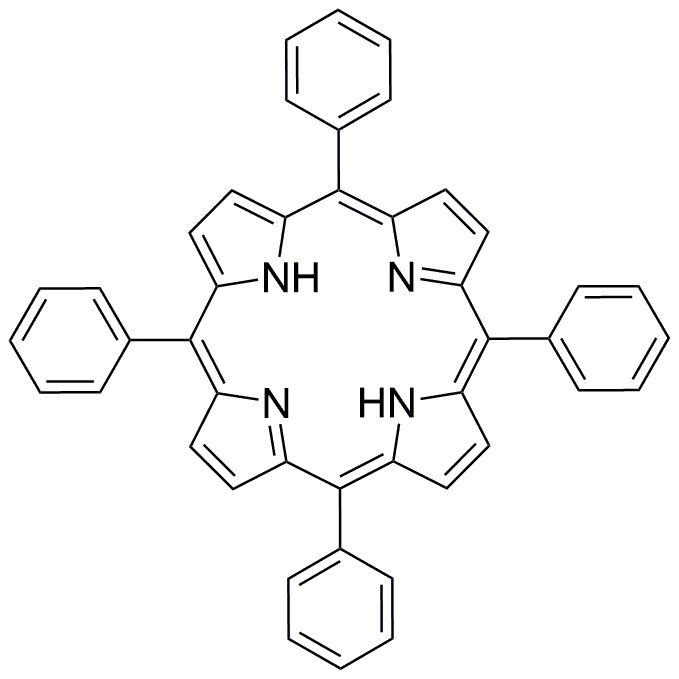Tetraphenylporphyrin (Chlorin free) is widely utilized in research focused on:
- Photodynamic Therapy: This compound is used in medical applications for treating certain types of cancer. Its ability to absorb light and produce reactive oxygen species makes it effective in targeting and destroying cancerous cells.
- Solar Energy Conversion: In the field of renewable energy, it serves as a photosensitizer in dye-sensitized solar cells, enhancing the efficiency of converting sunlight into electricity.
- Electrochemical Sensors: The compound is employed in the development of sensors for detecting various analytes, including gases and biomolecules, due to its electroactive properties.
- Organic Photovoltaics: It is used in the formulation of organic solar cells, contributing to the advancement of flexible and lightweight solar technology.
- Research in Catalysis: Tetraphenylporphyrin acts as a catalyst in various chemical reactions, particularly in the synthesis of complex organic molecules, making it valuable in pharmaceutical research.
General Information
Properties
Safety and Regulations
Applications
Tetraphenylporphyrin (Chlorin free) is widely utilized in research focused on:
- Photodynamic Therapy: This compound is used in medical applications for treating certain types of cancer. Its ability to absorb light and produce reactive oxygen species makes it effective in targeting and destroying cancerous cells.
- Solar Energy Conversion: In the field of renewable energy, it serves as a photosensitizer in dye-sensitized solar cells, enhancing the efficiency of converting sunlight into electricity.
- Electrochemical Sensors: The compound is employed in the development of sensors for detecting various analytes, including gases and biomolecules, due to its electroactive properties.
- Organic Photovoltaics: It is used in the formulation of organic solar cells, contributing to the advancement of flexible and lightweight solar technology.
- Research in Catalysis: Tetraphenylporphyrin acts as a catalyst in various chemical reactions, particularly in the synthesis of complex organic molecules, making it valuable in pharmaceutical research.
Documents
Safety Data Sheets (SDS)
The SDS provides comprehensive safety information on handling, storage, and disposal of the product.
Product Specification (PS)
The PS provides a comprehensive breakdown of the product’s properties, including chemical composition, physical state, purity, and storage requirements. It also details acceptable quality ranges and the product's intended applications.
Certificates of Analysis (COA)
Search for Certificates of Analysis (COA) by entering the products Lot Number. Lot and Batch Numbers can be found on a product’s label following the words ‘Lot’ or ‘Batch’.
*Catalog Number
*Lot Number
Certificates Of Origin (COO)
This COO confirms the country where the product was manufactured, and also details the materials and components used in it and whether it is derived from natural, synthetic, or other specific sources. This certificate may be required for customs, trade, and regulatory compliance.
*Catalog Number
*Lot Number
Safety Data Sheets (SDS)
The SDS provides comprehensive safety information on handling, storage, and disposal of the product.
DownloadProduct Specification (PS)
The PS provides a comprehensive breakdown of the product’s properties, including chemical composition, physical state, purity, and storage requirements. It also details acceptable quality ranges and the product's intended applications.
DownloadCertificates of Analysis (COA)
Search for Certificates of Analysis (COA) by entering the products Lot Number. Lot and Batch Numbers can be found on a product’s label following the words ‘Lot’ or ‘Batch’.
*Catalog Number
*Lot Number
Certificates Of Origin (COO)
This COO confirms the country where the product was manufactured, and also details the materials and components used in it and whether it is derived from natural, synthetic, or other specific sources. This certificate may be required for customs, trade, and regulatory compliance.


